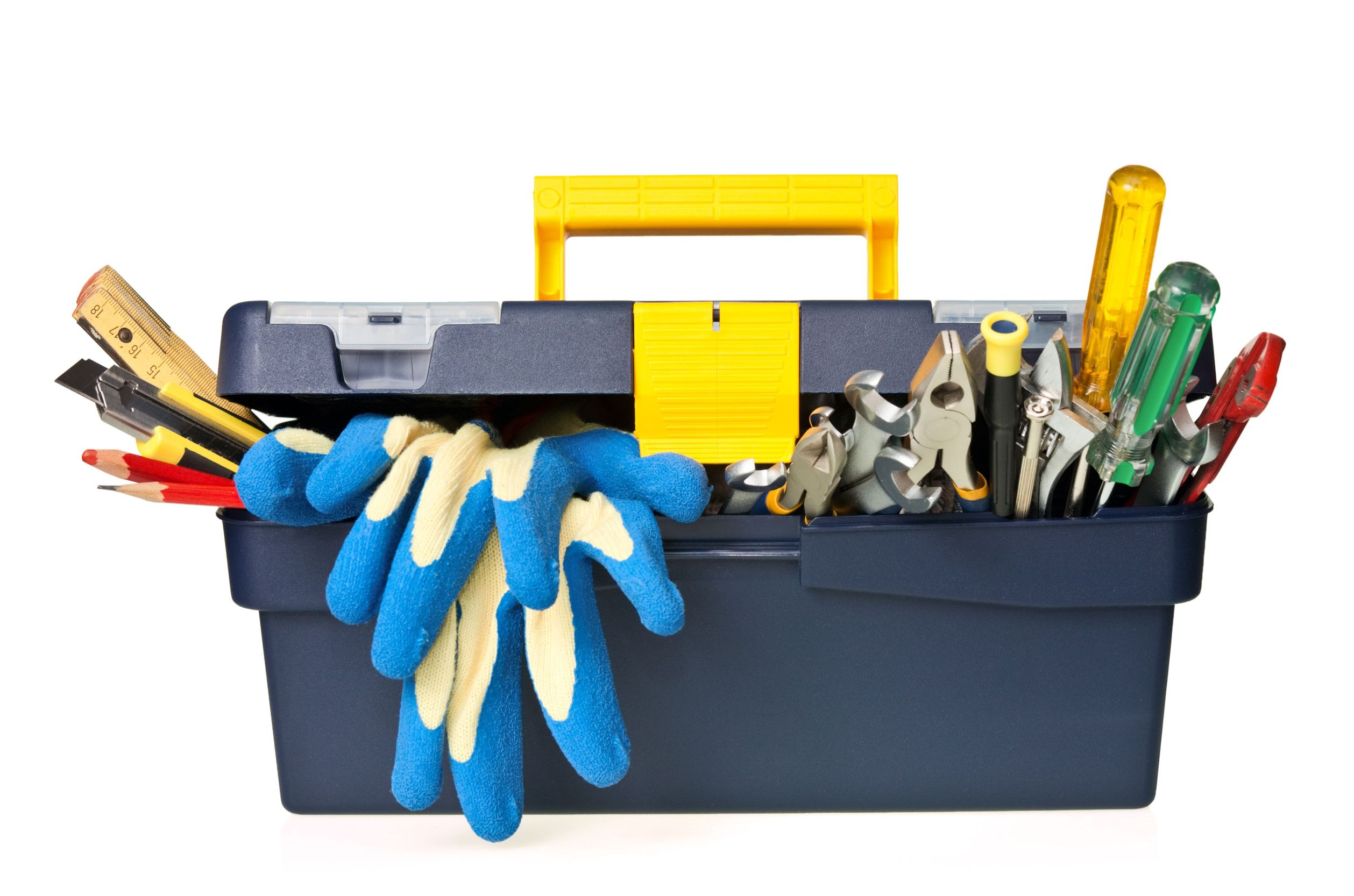Every full-timer knows how critical it is to have the right tools for any type of emergency. Just about anything can happen on the road – from popping a tire to putting a hole in the awning of your rig. And we know when these problems arise they are often unpredictable. So as a rule of thumb, never hit the road without a basic toolkit: hammers, screwdrivers, tow straps, jumper cables, ratchet straps, and maybe even some various items specific to our favorite toys, like bikes, kayaks, and motorcycles. But in some rare instances, these tools are not enough to get the job done. Below you’ll find a list of tools you may not have thought to add to your toolbox – all lightweight and multi-functional – because hey, space is limited right?
- A permanent marker is great for a variety of reasons. You can make signs, mark boxes and belongings, label items in the kitchen, label wirings and cables, and best of all – label the items in your toolbox!
- Hand and eye protection is an important asset to your toolbox. Not only are some RV fixes dirty jobs, such as adding oil to your rig, some are hazardous to your safety and health. Add a box of latex or nitrile rubber gloves for dirty and delicate jobs. These also come in handy in the kitchen while handling raw meat. Make sure to put a pair of leather work gloves and safety glasses into your toolbox for those jobs that require extra protection.
- Zip ties can be used in ways in which you never imagined. Use them to quickly fix a zipper, keep children out of cabinets holding cleaning supplies or medicines, support your portable garden, unclog drains, attach extra items to a backpack, close pant legs to avoid critters, repair temporarily the cosmetics of your rig or vehicle, keep food fresh in the kitchen, and much more. They can serve a much greater purpose than holding wire together.
- Many RVers swear by a Leatherman Multi-tool. These are similar to the popular Swiss Army knife; however, the Leatherman contains many more tools to support your everyday needs – all in the palm of your hand. The typical Leatherman multi-tool contains needle nose pliers, regular pliers, branded wire cutters, regular wire cutters, wire strippers, electrical crimper, knife, serrated knife, saw, awl, can opener, bottle opener, ruler, file, and other various screwdrivers. Don’t need all these tools in one? A number of different variations and off-brands exist.
- A hatchet and hammer combo is the “two birds with one stone” tool to add to your box. Use the hammer for anything that needs a little bit of help to do its job and the hatchet end for splitting firewood.
- Headlamps are a great tool to have for jobs that can’t wait to be fixed until morning. It not only serves purpose by providing illumination, it frees up your hands to help you get the job done more efficiently.
- Nothing works better for temporary fixes than duct tape. This versatile tool can temporarily fix leaks, secure loose items, prevent rattling, repair shoes to keep water out, assist with medical injuries like holding a bandage in place, act as a fire starter, and soften sharp edges. For more uses of duct tape, click here.
Other suggestions to you make your toolbox more functional:
- Consider converting your tools to a bumper mounted toolbox or roll up tool bags. These will not only help save space in your rig, but can also help keep tools from clanging together while on the road.
- Add LED lights to your toolbox. Depending on the style of toolbox you own, LED light strips can be added to drawers. A small infrared sensor turns the lights on when a drawer is opened and turns them off after it’s closed. These LED lights typically require AAA batteries and range from $15-$40.
- Make sure tools that are used more frequently, such as screwdrivers and wire cutters, are easily accessible.
What you add in your toolbox depends on the distance you travel, what “toys” you bring, what hobbies and activities you plan to do, and the current mechanical and physical status of your rig. Remember to always do a pre-inspection of your RV before starting out and make notes of service details. Keep a list of items in your toolbox and their location handy so that you never leave any behind!

